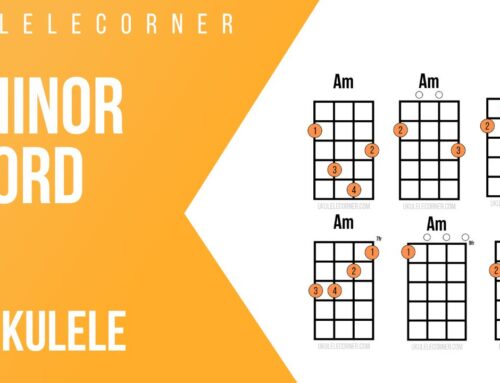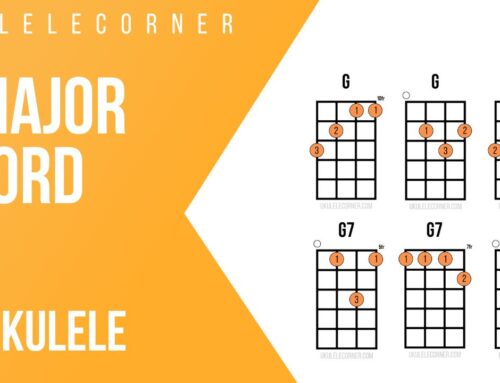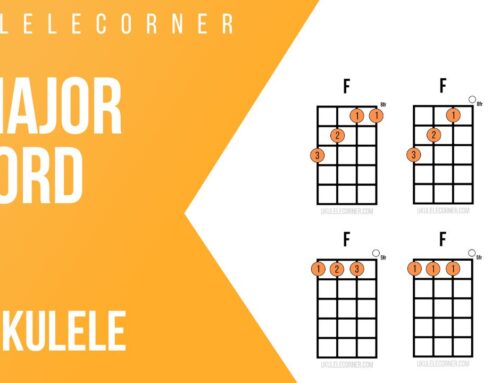In this video and article we’ll walk through using Rasgueado strumming on ukulele. Rasgueado is a Flamenco technique and will bring new life to your ukulele strumming!
Strumming on Ukulele
Strumming is one of the most common ways to create sound on the ukulele. Typically we use the right hand moving in an up-and-down motion from either the elbow or rotation of the forearm. The index finger is often used for both the up and down strums using the nail for a bright sound. The finger curves in towards the palm away from the other fingers similar to the needle on a record player (remember those!). The thumb is used as well for downstrums using the flesh for a warm sound. To create a smooth, warm tone, alternate index upstrums with thumb downstrums. To do this, extend the index finger and use the pad of the finger (doing the same with the thumb). There is a huge range of music that can be played using these techniques. But I want to explore with you another wonderful way of strumming. This technique develops the extensor muscles in the right hand. It also allows for flexibility, ease of movement, speed, and relaxation.
Rasgueado Strumming on Ukulele
Flamenco musicians often use a technique called Rasgueado, which literally means “back of the nail.” This refers to another type of strumming technique that doesn’t move the right hand in the way the folk strumming does. Instead of moving the entire hand from the elbow or forearm, individual fingers move down and up while the right hand stays stable with minimal movement. Let’s give it a try and see how it helps improve your playing while expanding your strumming vocabulary.
The Thumb
Plant your right-hand thumb on the fourth string toward the end of the sound hole next to the start of the fingerboard. Let the thumb extend out and away from the index finger so that the fingers have space to move. This is actually the typical set up that we use for fingerstyle playing using the thumb, index, middle, and ring fingers. The thumb touches the string in the middle on the pad and the rest of the fingers curve in a C shape. The fingers can move directly up and touch the back of the palm or down to extend into a L shape away from the palm.
The Index Finger
With the thumb now in place, strum the top 3 strings with the index finger moving directly down into the L shape then up back into the palm making the C shape. Relax the middle finger, ring finger, and pinky. They will move slightly as well but stay out of the way by extending forward towards the L shape slightly. I find that the middle finger moves the most here when the index finger strums. The goal is to keep these other fingers loose and relaxed when the index finger strums down and up. The index finger flicks forward in a burst of motion. When moving down. Let it relax immediately after this burst of motion. You can do repeated down strums very slowly at first with space between the strums but always move with that quick burst of energy. This is what engages the extensor muscle which is rarely used while play the ukulele with other types of strumming and fingerstyle techniques. Developing this muscle does wonders for the hand.
Try this until you can comfortably strum down and up with the index finger with the thumb planted on the 4th string. Try different rhythms including quarter note down strums then 8th note and 16th note down and up strum patterns. See if you can adapt some of your favorite strumming patterns to this technique and play chord progressions and songs you know. Try triplets, syncopation, swing, and various accents.
Try other fingers
When the index finger starts getting the hang of this, you can also try each of the other fingers. Even the pinky can join the fun. It will feel very strange strumming with the pinky at first but stick with it and you will start to feel your right hand loosening up. I find that after doing these strums fingerstyle playing feels easier, speed increases, and tone improves.
***
This is just the beginning of what is possible with Rasquedo technique. Finger rolls moving from the pinky to ring to middle to index fingers can add brilliant bursts of sound and accents are great to try next. We explore these techniques in practice routines, songs, and accompaniment lessons at the Ukulele Corner Academy. You can learn more about the UCA at https://ukulelecorner.com.




Leave A Comment